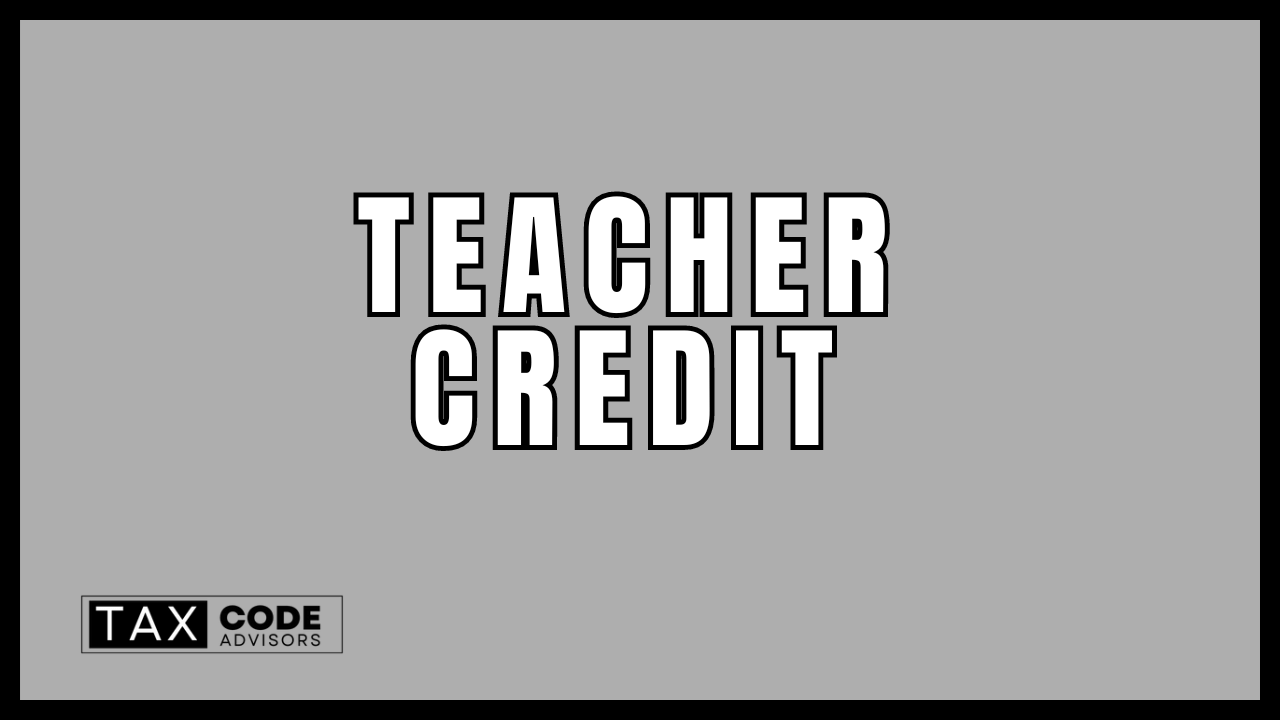
Educators hold one of the most crucial roles in society, shaping the minds and futures of younger generations. However, the financial challenges of acquiring and maintaining the supplies needed for a conducive learning environment are well-known. To support educators in their mission, the IRS provides specific tax benefits known as the Teacher Educational Credit. In this blog post, we'll dive into what this credit entails, how it can benefit teachers, and what educators need to know to take full advantage of it.
The Teacher Educational Credit refers to a combination of tax benefits that are designed to alleviate the financial burden on teachers when it comes to out-of-pocket expenses. These benefits often take the form of tax deductions and credits for educational supplies, professional development courses, and other classroom-related expenses.
One of the key components of the Teacher Educational Credit is the Educator Expense Deduction. This allows eligible teachers to deduct up to $250 of unreimbursed expenses spent on classroom supplies, such as books, supplies, computer equipment, and other materials used in the classroom. If both spouses are eligible educators and file jointly, they can deduct up to $500, but no more than $250 each.
To qualify for the Educator Expense Deduction, you must meet the following criteria:
Beyond the Educator Expense Deduction, teachers can also tap into additional tax credits for further education. These credits include the Lifetime Learning Credit (LLC) and the American Opportunity Tax Credit (AOTC), which can help offset the costs of advanced education necessary for professional development or credentialing.
The LLC allows educators to claim a credit of 20% of the first $10,000 in post-secondary education expenses, for a maximum credit of $2,000 per tax return. It’s designed for those taking courses to acquire or improve job skills, and there's no limit on the number of years you can claim the credit.
The AOTC is slightly different. It offers a credit of up to $2,500 per student for the first four years of post-secondary education. The credit is 100% of the first $2,000 in qualified expenses and 25% of the next $2,000. If the credit brings your tax down to zero, you can have 40% of any remaining amount of the credit (up to $1,000) refunded to you.
To claim the Educator Expense Deduction, educators must fill out Form 1040, Schedule 1, and provide receipts or other documentation for their expenses. For the LLC or AOTC, Form 8863, "Education Credits," must be completed and attached to the tax return.
Educators planning to claim these credits should keep meticulous records throughout the year. Store receipts, log professional development hours, and track any other relevant expenses. This preparation makes the process smoother and ensures that you maximize your entitled benefits.
While these credits provide substantial aid, educators must also be aware of the specific rules and income limits associated with each credit. Certain restrictions may apply based on modified adjusted gross income, filing status, and other factors.
The Teacher Educational Credit is a valuable resource for educators, providing financial relief for those who invest their own money into bettering education. By understanding and utilizing the Educator Expense Deduction and educational tax credits like the LLC and AOTC, teachers can receive some well-deserved support, reflecting society’s appreciation for their vital contributions.
Educators are encouraged to consult with a tax professional to ensure they’re getting the full benefit of the credits available to them. After all, every bit of savings can be redirected towards what matters most — creating an enriching learning experience for their students.